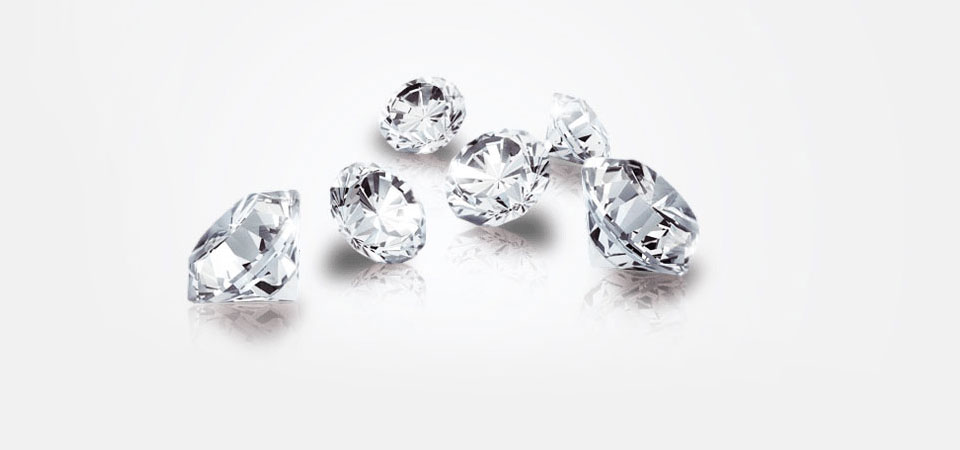We all have a certain image in our heads of what diamonds are, and what they represent. While they are known throughout the world for their beauty and rarity, they also have a fascinating history, and have made an impression on society for thousands of years.
With April’s birthstone being diamond, what better time to celebrate the diamond’s weird and wonderful history? Here are ten astonishing facts about diamonds:
1. In the 16th century, the Koh-i-Noor Diamond was described as being worth “half the daily expenditure of the whole world”
The Koh-i-Noor is one of the largest polished diamonds in the world, weighing 105.60 carats, and is part of the British Crown Jewels. Koh-i-Noor is Hindu-Urdu for ‘Mountain of Light’ and dates back to at least the 14th century. It was ceded to Queen Victoria in March 1849 and is probably the world’s most famous diamond. It was so prized that in the 16th century, it was described by a Mughal emperor as being worth “half of the daily expense of the world”.
2. A star in the constellation Centaurus is made of diamond and is called Lucy
Named after the iconic Beatles song ‘Lucy in the Sky with Diamonds’, BPM 37093 is a variable white dwarf star with a mass of 1.1x that of the sun. It is about 50 light-years from Earth in the Centaurus constellation. Overall, the star is 10 billion trillion trillion carats in weight.
3. The largest diamond ever discovered was called the Cullinan diamond, and weighed in at an amazing 3016 carats (603.2 grams)
The diamond was discovered at the Premier No. 2 mine in Cullinan, South Africa, on 26th January 1905. It was named after Thomas Cullinan, the mine’s chairman. It was put on sale in London that same year but went unsold. Two years later, the government of the Traansvaal Colony presented it to King Edward VII. He chose the Asscher Brothers of Amsterdam to cut the diamond, with one of the brothers taking it to Holland with the diamond in his coat pocket. Meanwhile, a Royal Navy ship carried an empty box across the North Sea to throw off potential thieves.
4. The first recorded use of a diamond engagement ring was in 1477
The first well-documented use of a diamond ring to signify engagement was by Archduke Maximilian of Austria, when he got engaged to Mary of Burgundy. This was a major influence on people of higher social class or wealth, encouraging them to give diamond rings to their loved ones.
5. Romans believed that Cupid’s arrows were tipped with diamonds
Diamonds have been associated with love for centuries, and the Romans may be to thank for this. In classical mythology, Cupid is the god of desire, love, attraction and affection. Diamond tipped, Cupid’s arrows were thought to contain a potion to create uncontrollable desire in gods and humans alike.
6. People used to believe that powdered diamond was a powerful poison
It was reputed that while powdered flawed diamonds were poisonous, powdered flawless diamonds could help contribute to a long life. Holy Roman Emperor Frederick II died, according to legend, of an overdose of diamond powder. It was also believed that diamonds kept phantoms at bay, kept away nightmares, and they were also worn in battle to make the wearers courageous as well as virtuous.
7. The word diamond derives from the Greek “adamas”, which means invincible or indestructible
As the world’s hardest natural substance (10 on MOHs hardness scale), it’s fitting that its name refers to one of its most well-known characteristics.
8. Diamonds are billions of years old
Diamonds are formed at extremely high temperature and under high pressure, roughly 100 miles below the surface of the earth, in the mantle. Starting out life as carbon minerals, nature transforms carbon gradually over time – roughly one to three billion years.
9. Extreme, EXTREME heat would vaporise diamond into carbon dioxide and heating a diamond without oxygen turns it into graphite
Diamond and graphite are both pure forms of carbon, with diamond being the world’s hardest natural substance, and graphite being one of the softest. Unlike diamonds though, graphite is an extremely good conductor of electricity.
10. It is claimed that synthetic diamonds can be made from peanut butter
With a lot of time, money, pressure and equipment, lots of things that contain carbon can be turned into diamonds. Scientists in Germany claim that synthetic diamonds can be made out of peanut butter… but the hydrogen bonded to the carbon would mean that the process would be very slow and messy. So, it’s probably not a great idea to start stock-piling the nutty spread just yet!
At Celsteel, we have an extremely large stock of diamonds in all shapes and sizes, starting with diamonds as small as 0.70 mm, up to fine individual GIA certified stones.
To find out more, head to https://www.celsteel.co.uk/diamonds/


